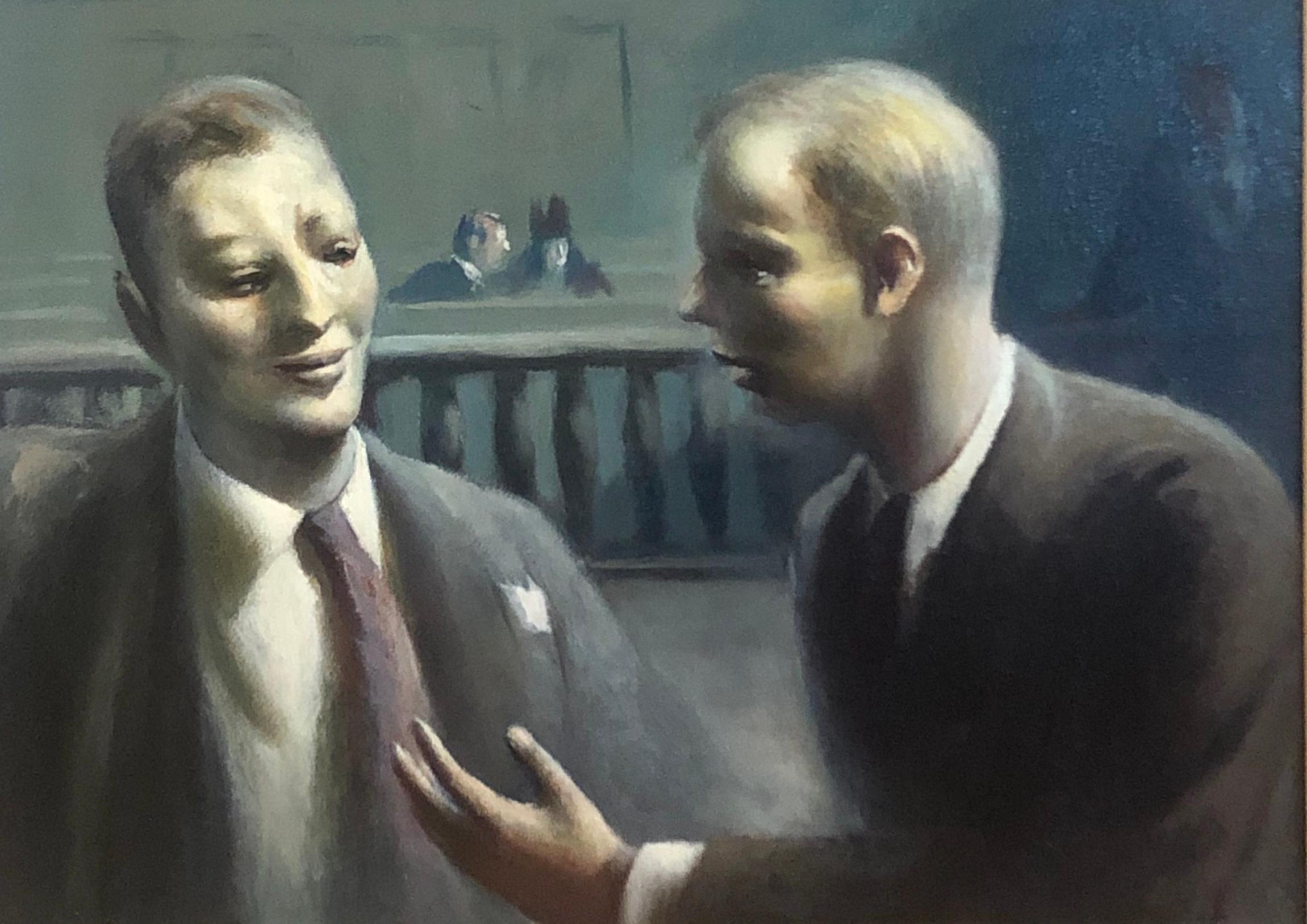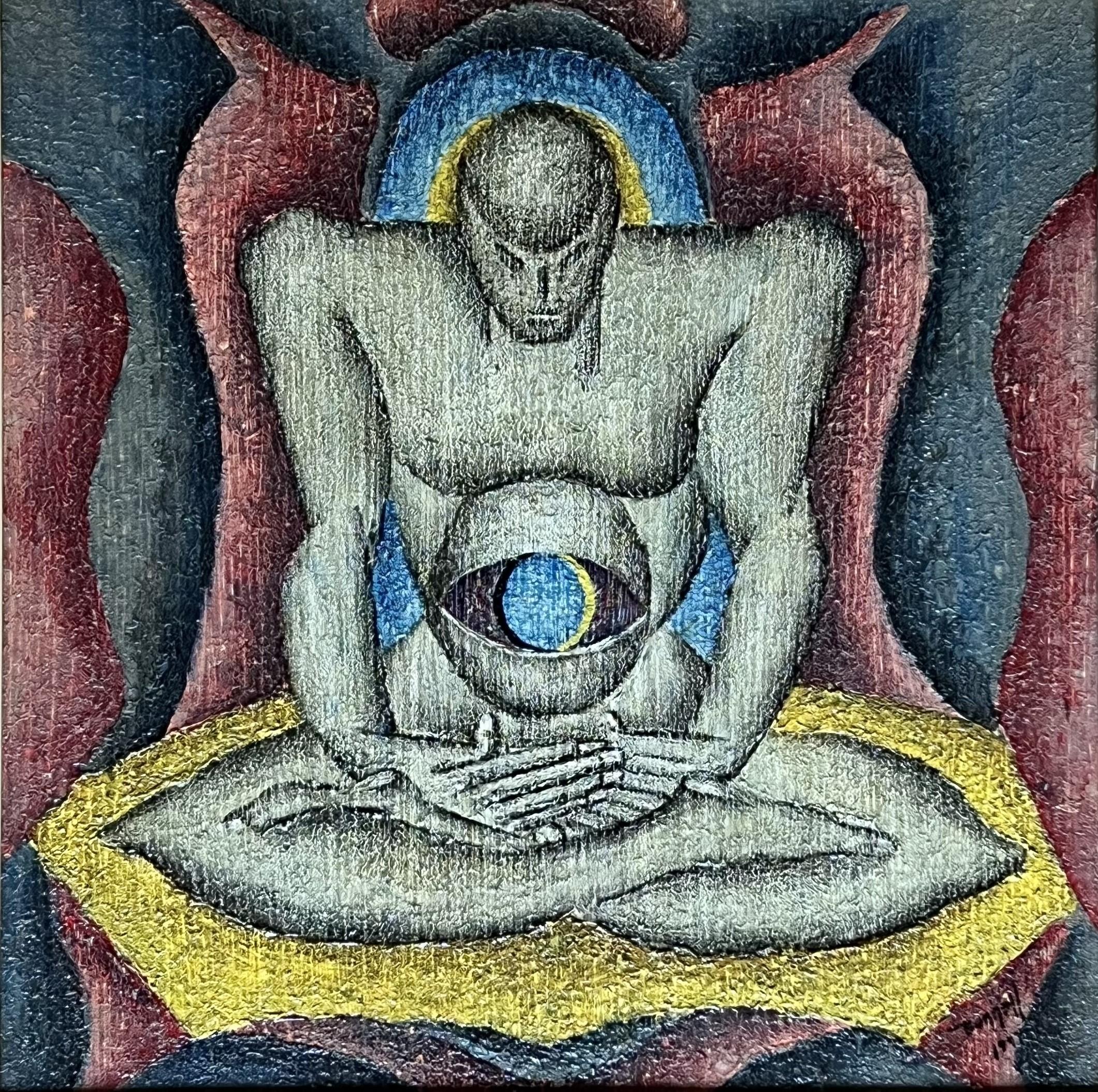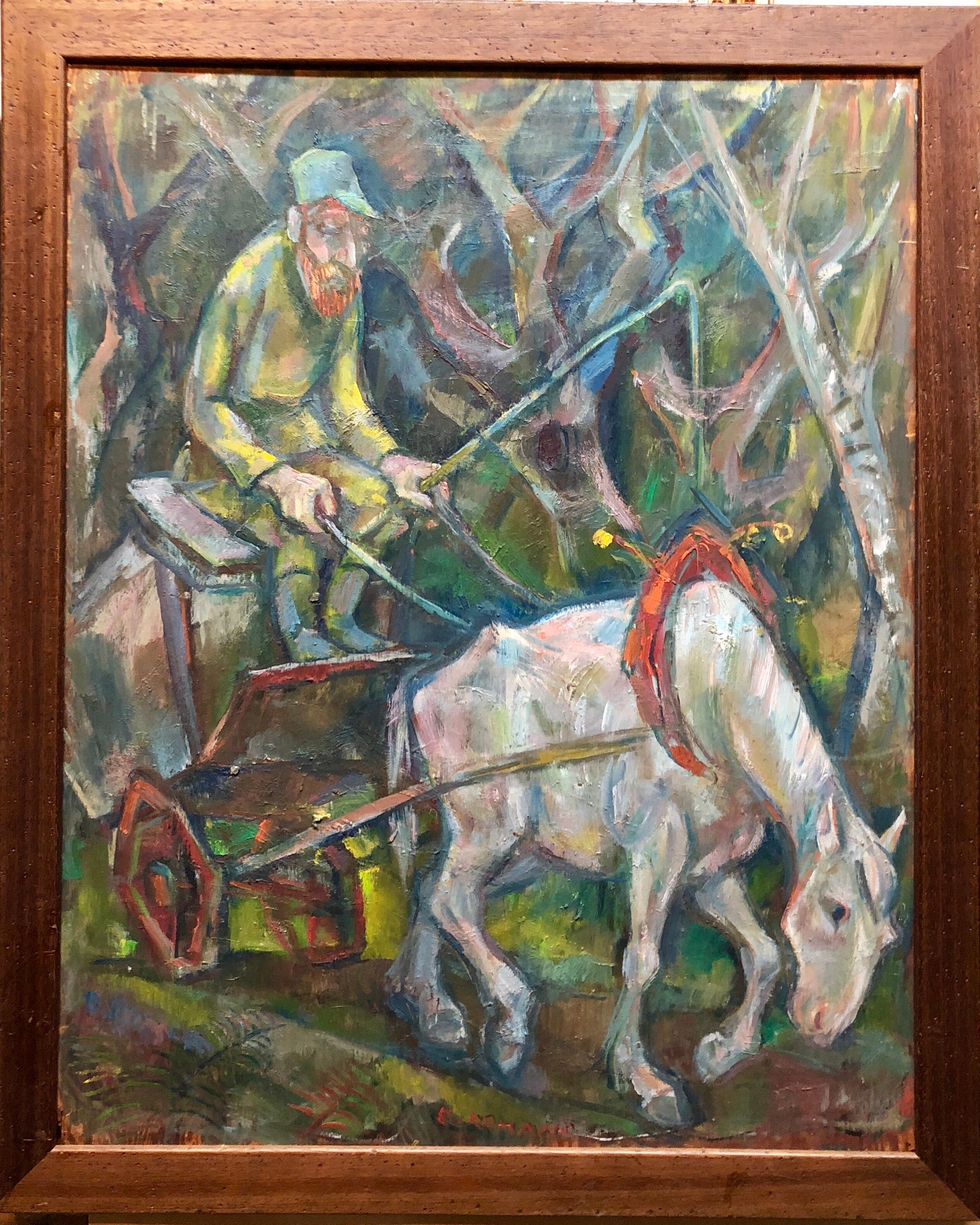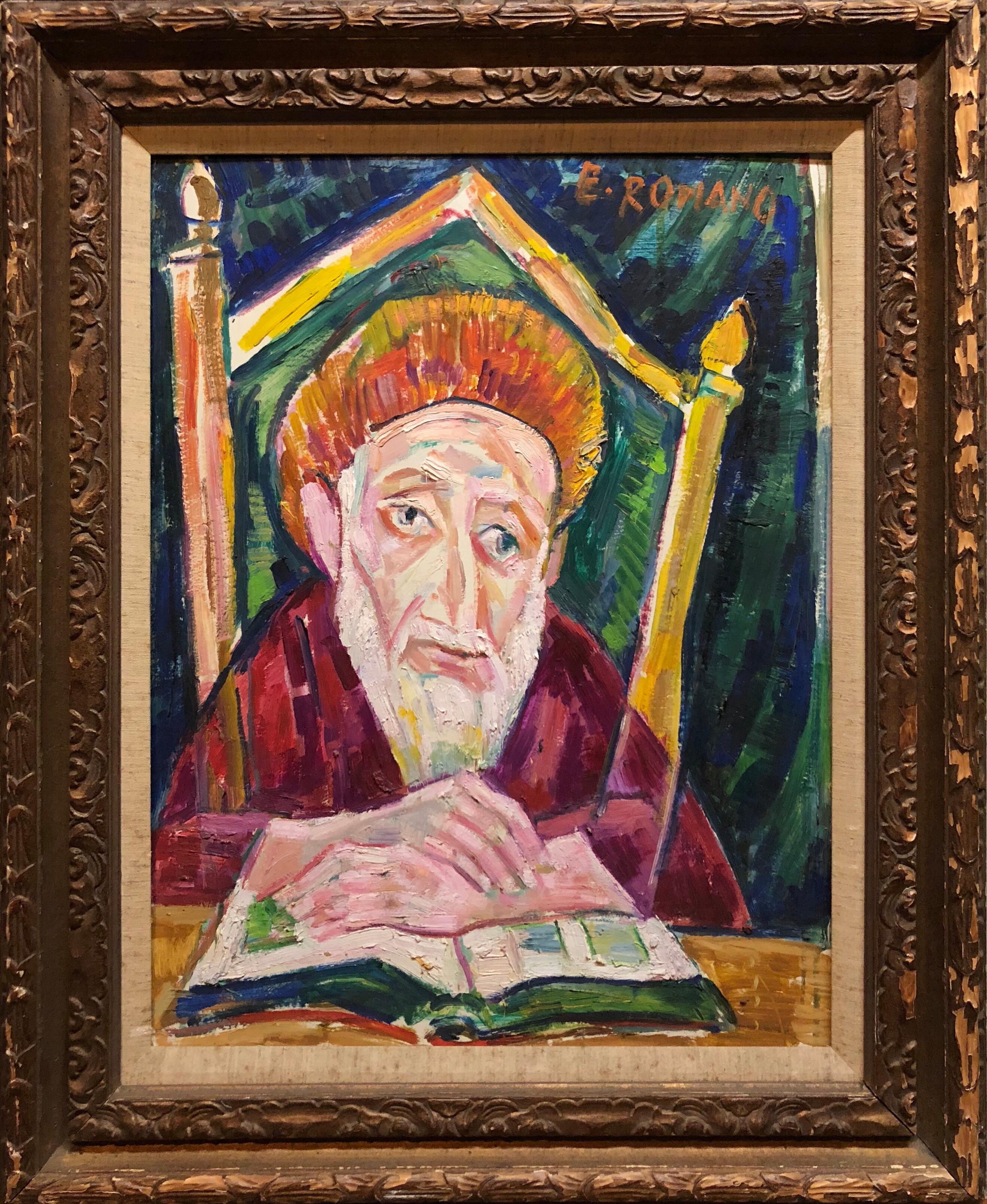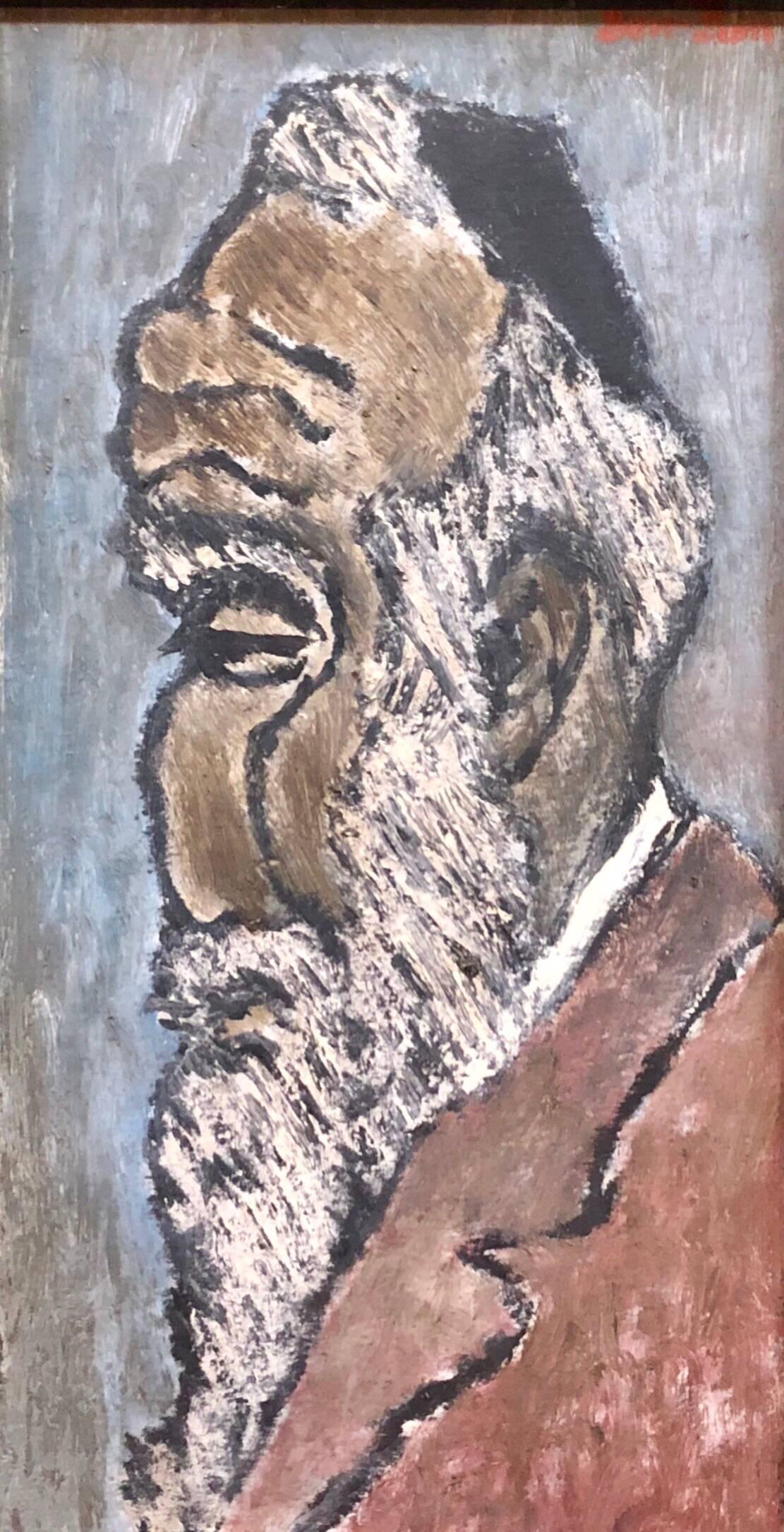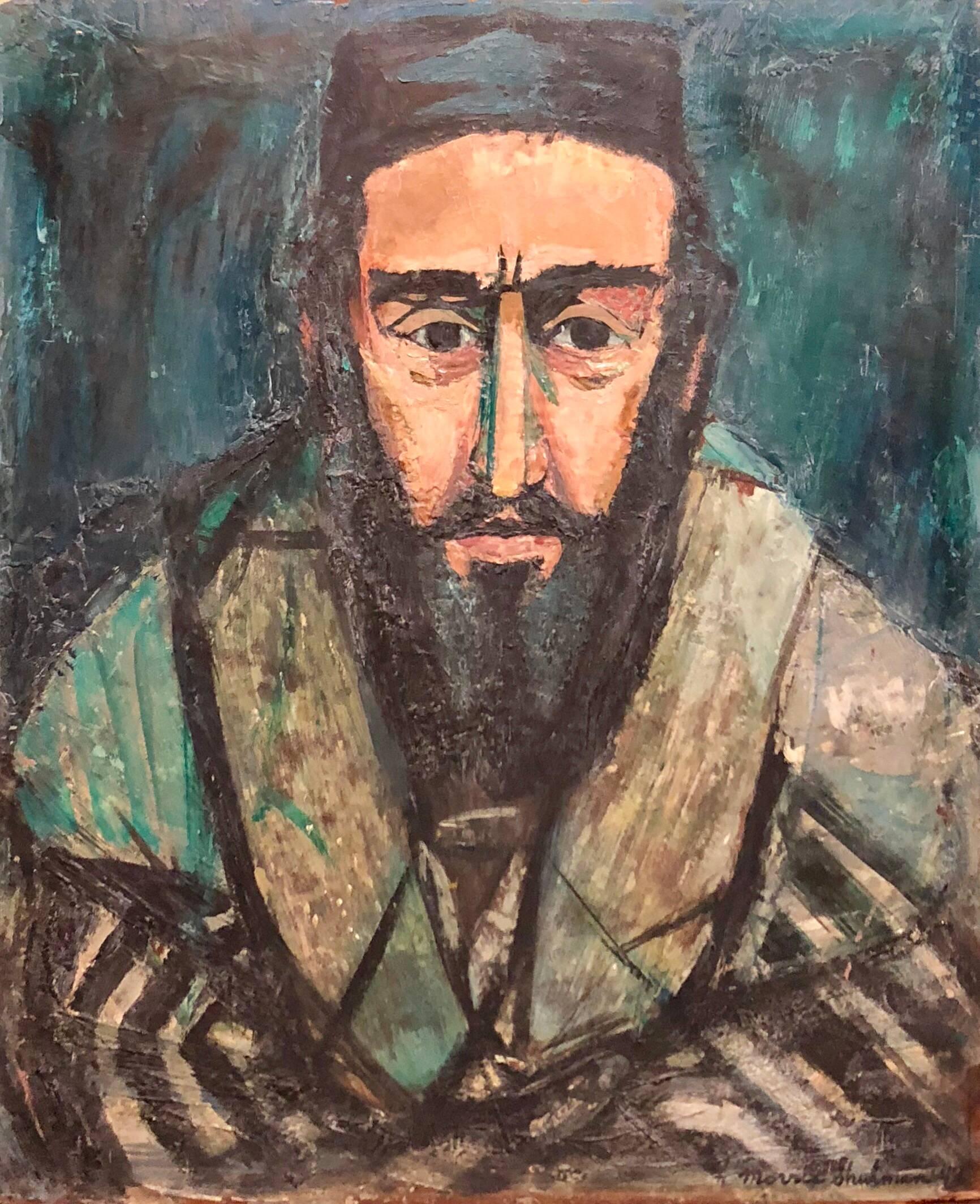Items Similar to The Jury
Want more images or videos?
Request additional images or videos from the seller
1 of 10
Mervin JulesThe Juryc. 1940's
c. 1940's
About the Item
MERVIN JULES (1912-1994)
The Jury, c.1940’s
Oil on board
14 x 15 1/8 inches
Signed at lower left: JULES
PROVENANCE
ACA Galleries, New York, NY
EXHIBITED
Cahoon Museum of American Art, Cotuit, Massachusetts, Tell Me a Story – Chapter 2, Narrative Art of the Cape and Islands, July 17 – September 15, 2001.
A painter, illustrator, print maker, and educator, Mervin Jules was known for painting and illustration that focused on social commentary and that often employed satire.
He was active as a print maker, having been a designer of silk prints and a china painter as a young man growing up in Baltimore. During the Depression of the 1930s, he was a member of the Silk Screen Unit of the Fine Arts Project of the WPA.
Jules studied art at Baltimore City College, and on scholarship at the Maryland Institute of Fine and Applied Arts where he graduated in 1934. In 1937, he enrolled at the Art Students League with Thomas Hart Benton. He had his first one-man exhibition in November, 1937 in New York City, and in this show had small tempera panels, and a series of Pennsylvania coal-country theme gouache paintings.
Teaching positions included the Fieldston School, and the Museum of Modern Art in New York City from 1943 to 1946; the Baltimore Educational Alliance; and Smith College in Northampton, Massachusetts from 1946 to 1969. Upon leaving Smith, he became Chair of the Art Department of the City College of New York, and also maintained a studio in Provincetown, Massachusetts.
Memberships included the Provincetown Art Association, Audubon Artists, American Art Congress, and United American Artists.
Exhibition Venues:
"Baltimore Museum of Art, 1936-46; Whitney Museum of American Art, 1938, 1940-49; Art Institute of Chicago, 1938-41; Pennsylvania Academy of the Fine Arts annual, 1939, 1943, 1948-50; Museum of Modern Art, 1941 (prize); "World's Fair, New York", 1939; Golden Gate Exposition, 1939; Carnegie Institute, 1941, 1944-45; Virginia Museum of Fine Arts, 1946; Library of Congress, 1940, 1945-46; Library of Congress, 1945; Brooklyn Museum; Corcoran Gallery of Art biennial, 1945; ACA Gallery, New York City, 1940s; San Francisco World's Fair; American American Artists for Victory (sent to England); Boston Printmakers, 1967 (19th annual Exhibition, honorable mention ). Awards: Asian-African Study Program grant to Japan, 1967; Alfred Vance Churchill Foundation grant, 1967.
- Creator:Mervin Jules (1912 - 1994, American)
- Creation Year:c. 1940's
- Dimensions:Height: 14 in (35.56 cm)Width: 15.25 in (38.74 cm)
- Medium:
- Movement & Style:
- Period:
- Condition:
- Gallery Location:Concord, MA
- Reference Number:1stDibs: LU354752162
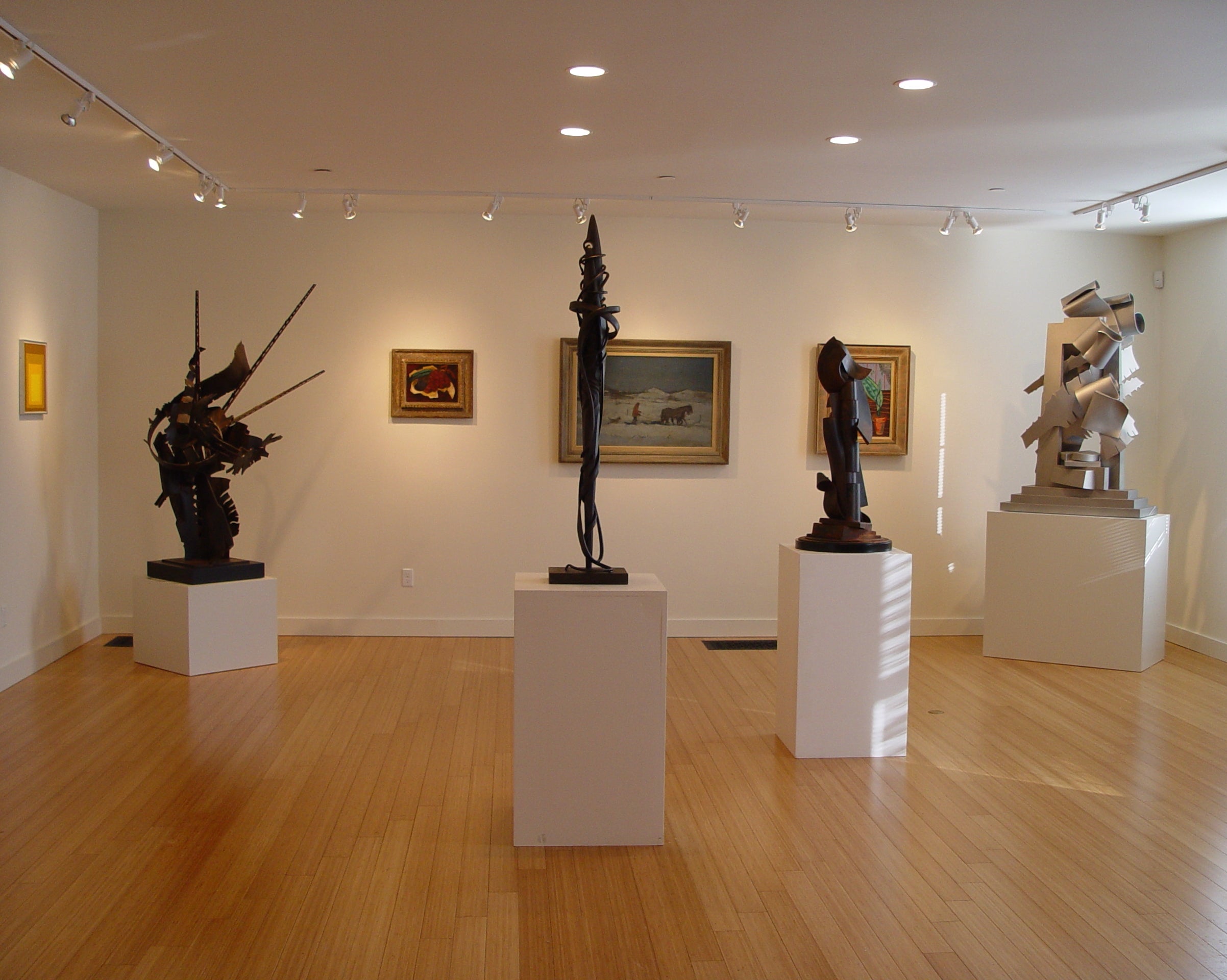
About the Seller
4.4
Vetted Seller
These experienced sellers undergo a comprehensive evaluation by our team of in-house experts.
Established in 1993
1stDibs seller since 2014
50 sales on 1stDibs
- ShippingRetrieving quote...Ships From: Concord, MA
- Return PolicyThis item cannot be returned.
More From This SellerView All
- Seeking a FutureBy Philip EvergoodLocated in Concord, MAPHILIP EVERGOOD (1901-1973) Seeking a Future, 1952 Oil on canvas 24 x 18 inches Signed and dated at lower left: Philip Evergood / 52 Heydenryk frame PROVENANCE Alfredo Valent...Category
1950s American Modern Figurative Paintings
MaterialsOil, Canvas
- The FactoryBy Gregorio PrestopinoLocated in Concord, MAGREGORIO PRESTOPINO (1907-1984) The Factory, c. 1935 Oil on canvas 30 x 24 inches Signed at lower left: Prestopino Born in the Little Italy section of New York City, Prestopino was awarded a scholarship to the National Academy of Design at the age of fourteen. Early in his career he came under the influence of the French Impressionists, but was soon drawn to the American realists of the Ashcan School, whose work led him directly to the study of urban life. As a young man Prestopino set up his first studio in Harlem. During the 1930s his social realist paintings had an anecdotal quality in their description of everyday incidents of the working class, depicting the grit of city life – docks, laborers, vendors, Lower East Side streets. Prestopino lived in Brooklyn for many years, spending summers at a farm near Clinton, New Jersey. At the farm Prestopino painted in the barn, while his wife - illustrator Elizabeth Dauber - had a studio in the house. He moved to Roosevelt, New Jersey in 1949. Other artists who have lived in Roosevelt include Ben and Bernarda Shahn, their son Jonathan Shahn, Jacob Landau, David Stone Martin and his son, Stefan Martin...Category
1930s American Modern Figurative Paintings
MaterialsOil, Canvas
- Woman and Rock, 1975By Scott PriorLocated in Concord, MASCOTT PRIOR (born 1949) Woman and Rock, 1975 Oil on masonite 11 x 13 3/8 inches Signed and dated verso: Prior 1975 Framed PROVENANCE The artist Ann and Graham Gund, Cambridge, Mas...Category
1970s American Realist Figurative Paintings
MaterialsOil
- Frances and Ruth Jennings in a Field of FlowersLocated in Concord, MAMABEL E. DICKINSON POND (1869-1960) Frances and Ruth Jennings in a Field of Flowers, 1909 Oil on canvas on paperboard 7 x 5 inches Signed at lower right: M. E. Dickinson Inscribed v...Category
Early 1900s American Impressionist Figurative Paintings
MaterialsOil
- Goldie’s DreamBy Gregory GillespieLocated in Concord, MAGREGORY GILLESPIE (1936-2000) Goldie’s Dream, 1999 Oil on panel 20 1/8 x 19 5/8 inches Signed verso: Greg Gillespie Original frame PROVENANCE Forum Gallery, New York, New York (label verso) Nielson Gallery, Boston, Massachusetts (label verso) EXHIBITED Forum Gallery, New York, Gregory Gillespie: New Works, December 2 - 31, 1999 Gregory Gillespie, an artist whose probing, urgent, often bizarre paintings occupied a singular place in the history of late-20th-century representational art committed suicide in 2000 at the age of sixty-four. His art was known for an obsessive attention to realistic detail, but the term realist fit only a narrow swath of his sensibility. He once told an interviewer that he was seeking a reality ''beyond our sense,'' and he pursued it with a variety of artistic styles, techniques and references. He mixed his realism with Expressionist distortion and Surrealistic juxtaposition, just as he supplemented his meticulously applied oil paint with roiling brushwork, photomontage, collage, assemblage, thickly built-up surfaces and, recently, photocopied images. He also found inspiration in several centuries of European painters, including Balthus, Bacon, Beckmann, Bosch, Breugel, Van Eyck, Masaccio and Crivelli. He drew from, and frequently depicted motifs from, Indian sculpture, Tibetan mandalas...Category
1990s Surrealist Figurative Paintings
MaterialsPanel, Oil
- UntitledBy Alton PickensLocated in Concord, MAALTON PICKENS (1917-1991) Untitled, 1955 Oil on canvas 44 ¼ x 33 ½ inches Signed and dated at lower left: PICKENS / 55 Partial label on the verso: ACA Galleries, New York, New Y...Category
1950s Surrealist Figurative Paintings
MaterialsOil, Canvas
You May Also Like
- Guy Pene du Bois WPA American Modernism Realism NYC Scene Oil Lawyers in CourtBy Guy Pène Du BoisLocated in New York, NYGuy Pene du Bois' "Two Figures in Courtroom" is a WPA era American scene oil painting created in a realistic style. Modernism at its best The work is framed by Heydenryk. Pène du Bois descended from French immigrants who settled in Louisiana in 1738 and was raised in a Creole household. He was born in 1884 in Brooklyn, NY and first studied with William Merritt Chase at the New York School of Art and later continued his training with Robert Henri. Pène du Bois was greatly impressed with Henri's credo that "real life" was subject matter for art and throughout his life a realist philosophy informed his art as well as his parallel career, art criticism. In 1905, Pène du Bois made his first visit to Paris where he painted scenes of fashionable people in cafes rendered in the dark tonalities and impasto associated with the Ashcan School. By 1920, he had achieved his mature style, which was characterized by stylized, rounded, almost sculptural figures painted with invisible brushstrokes. The subjects of his paintings were often members of society whom he gently satirized. In 1924, Pène du Bois and his wife, Floy, left for France where they would remain until 1930. Returning to America showcases pictures the artist produced after this very productive period abroad. After five years of living in France, Pène du Bois was able to observe American life with fresh eyes. His work becomes more psychologically intense and less satirical. In Girl at Table a slender, blond is shown gazing at a small statue that she holds at arm's distance. The meaning is elusive, but a powerful sense of longing is evoked. Similarly, paintings such as Dramatic Moment and Jane are taut with unresolved dialogue. Both pictures depict mysterious interiors in which a lone woman anxiously awaits the denouement of a suspenseful scene. Other pictures, for example, Chess Tables, Washington Square and Bar, New Orleans, recall Pene du Bois's Ashcan origins in their depiction of urban entertainment. During this period, landscape becomes an important subject for Pène du Bois. Girl Sketching...Category
1930s American Modern Figurative Paintings
MaterialsPaper, Oil, Board
- Untitled (Transcendental Composition)By Charles Ragland BunnellLocated in Los Angeles, CAThis work is part of our exhibition - America Coast to Coast: Artists of the 1940s Untitled (Transcendental Composition), oil on board, 1947, oil on board, signed and dated lower r...Category
1940s American Modern Paintings
MaterialsOil, Board
- Large Modernist Oil Painting 1940s, Judaica Hasidic Shtetl Wagon Driver WPA EraBy Emanuel Glicenstein RomanoLocated in Surfside, FLGenre: Modern Subject: Landscape with figure of horse, driver and wagon Medium: Oil Surface: wood Board EMANUEL ROMANO Rome, Italy, b. 1897, d. 1984 Emanuel Glicen Romano was born in Rome, September 23, 1897. His father Henryk Glicenstein was a sculptor and was living in Rome with his wife Helena (born Hirszenberg) when Emanuel was born. His father obtained Italian citizenship and adopted the name Enrico. Emanuel was brought up in Italy, Switzerland, Germany, England and Poland. In 1926 Emanuel Glicenstein Romano and his father sailed for New York. They briefly visited Chicago. Romano's sister, Beatrice, and mother only joined them in New York years later. Romano changed his name on his arrival to America and some have erroneously speculated that this was to avoid antisemitic discrimination. In truth, as the son of a highly-regarded artist, Romano changed his name to ensure that any success or recognition he would later attain, would be the result of nothing other than his own merit as an artist, and not on account of his father's fame. In 1936 Romano was worked for the WPA Federal Art Project creating murals. ( there were many jewish artists active with in the WPA period. notably Chaim Gross, Ben Shahn, Isaac and Moses Soyer, Abraham Rattner and many others. During and immediately after World War II, Romano created a series of allegorical works depicting graphic holocaust images that were held closely by the family until after his passing. One of these works is now on permanent display in the Florida Holocaust Museum in St. Petersburg Florida. Emanuel's father died in 1942 in a car accident before they could realize their shared dream of visiting Israel. In 1944 Romano, having completed his degree at the Pennsylvania Academy of Fine Arts and the Art Institute of Chicago, began teaching at the City College of New York. Romano moved to Safed, Israel in 1953 and established an art museum in his father's memory, the Glicenstein Museum. COLLECTIONS Indianapolis Museum of Art Metropolitan Museum of Art Boston Fine Arts Museum Fogg Museum Musée Nacional de France Recently his work has been added to the Florida Holocaust Museum collection. His notable works include his holocaust themed allegorical paintings as well as portraits of Marianne Moore, his father and William Carlos Williams...Category
1930s American Modern Figurative Paintings
MaterialsOil, Board
- Modernist Oil Painting 1940s, Judaica Hasidic Rabbi in JerusalemBy Emanuel Glicenstein RomanoLocated in Surfside, FLGenre: Portrait Subject: Landscape Medium: Oil Surface: Board Country: United States EMANUEL ROMANO Rome, Italy, b. 1897, d. 1984 Emanuel Glicenstein Romano was born in Rome, September 23, 1897. His father Henryk Glicenstein was a sculptor and was living in Rome with his wife Helena (born Hirszenberg) when Emanuel was born. His father obtained Italian citizenship and adopted the name Enrico. Emanuel was brought up in Italy, Switzerland, Germany, England and Poland. In 1926 Emanuel and his father sailed for New York. They briefly visited Chicago. Romano's sister, Beatrice, and mother only joined them in New York years later. Romano changed his name on his arrival to America and some have erroneously speculated that this was to avoid antisemitic discrimination. In truth, as the son of a highly-regarded artist, Romano changed his name to ensure that any success or recognition he would later attain, would be the result of nothing other than his own merit as an artist, and not on account of his father's fame. In 1936 Romano was worked for the Federal Art Project creating murals. During and immediately after World War II, Romano created a series of allegorical works depicting graphic holocaust images that were held closely by the family until after his passing. One of these works is now on permanent display in the Florida Holocaust Museum in St. Petersburg Florida. Emanuel's father died in 1942 in a car accident before they could realize their shared dream of visiting Israel. In 1944 Romano, having completed his degree at the Pennsylvania Academy of Fine Arts and the Art Institute of Chicago, began teaching at the City College of New York. Romano moved to Safed, Israel in 1953 and established an art museum in his father's memory, the Glicentein Museum. COLLECTIONS Indianapolis Museum of Art Metropolitan Museum of Art Boston Fine Arts Museum Fogg Museum Musée Nacional de France Recently his work has been added to the Florida Holocaust Museum collection. His notable works include his holocaust themed allegorical paintings as well as portraits of Marianne Moore, his father and William Carlos Williams...Category
1970s American Modern Figurative Paintings
MaterialsOil, Board
- Modernist Judaica Oil Painting "Old Jew" Jewish Rabbi at PrayerBy Ben-Zion WeinmanLocated in Surfside, FLAn oil on board Judaic painting by modern artist Ben-Zion Weinman. It depicts a portrait in profile of an old Jew. The work is signed "Ben-Zion". Born in 1897, Ben-Zion Weinman celebrated his European Jewish heritage in his visual works as a sculptor, painter, and printmaker. Influenced by Spinoza, Knut Hamsun, and Wladyslaw Reymont, as well as Hebrew literature, Ben-Zion wrote poetry and essays that, like his visual work, attempt to reveal the deep “connection between man and the divine, and between man and earth.” An emigrant from the Ukraine, he came to the US in 1920. He wrote fairy tales and poems in Hebrew under the name Benzion Weinman, but when he began painting he dropped his last name and hyphenated his first, saying an artist needed only one name. Ben-Zion was a founding member of “The Ten: An Independent Group” The Ten” a 1930’s avant...Category
1940s American Modern Figurative Paintings
MaterialsOil, Board
- Judaica Rabbi Portrait Oil Painting American WPA Abstract Expressionist ArtistBy Morris ShulmanLocated in Surfside, FLBorn in Savannah, Georgia in 1912, abstract expressionist painter Morris Shulman studied at the National Academy of Design, Art Students League and Hans Hofmann School of Art in New ...Category
1940s American Modern Portrait Paintings
MaterialsEncaustic, Oil, Board
Recently Viewed
View AllMore Ways To Browse
The Modern Library Of The
1940S Vintage Fairs
1940s Library
American School Maryland
American School Baltimore
American Silk Screen
Golden Gate Painting
Golden Chinese Painting
19th Japan Silk Paint
50s Illustration Art
C Hart
1946 Chinese
African American Screen
1940s Oil On Panel
Japanese Modern Silk Screen
Japanese Chinese Painting Silk
1930s Wpa Prints
Painted Pennsylvania Chair
